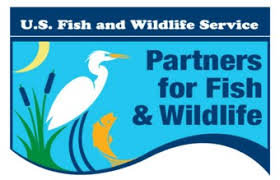Proper management creates flyway system
By James L. Cummins
Special to The Messenger
The Partners for Fish and Wildlife Program (Partners Program), which was established in 1987, is the U.S. Fish and Wildlife Service’s (USFWS) primary mechanism for conservation delivery on private lands. The program aids landowners interested in improving fish and wildlife habitats on their properties.
The program is aimed at restoring and enhancing habitat for important and imperiled habitat types and their associated species of concern. The program emphasizes restoring degraded wetlands, native grasslands, streams, riparian areas, longleaf forests, and other habitats to their original condition.
The program's philosophy is to work proactively with private landowners for the mutual benefit of declining federal trust species and the interests of the landowners involved. Usually, a dollar-for-dollar cost-share is achieved by working with landowners and a host of nationally based and local entities. Landowners make a commitment to restore the habitat for the life of the agreement (at least 10 years) and otherwise retain full control of the land.
Activities of the Partners Program typically include:
Upland Wildlife Habitat: planting field borders and filter strips to grass/legume mixtures; establishing openings; planting and seed bed preparation for food, cover, and nesting; establishing native prairie and grassland; prescribed burning; restoration of wildlife habitat and corridors; forest stand improvement to include site preparation and tree planting.
Wetland Wildlife Habitat: installation of water control structures in agricultural fields, moist-soil areas, and forested wetlands to provide beneficial habitat for wetland wildlife; installation of nesting structures; restoration of hydrology; restoration of wildlife habitat and corridors; fencing for habitat protection; forest stand improvement to include site preparation and tree planting; planting and seed bed preparation for food, cover, and nesting.
Threatened and Endangered Species Habitat: removal of barriers for aquatic species; establishment, management, maintenance, enhancement, and restoration of grassed waterways and riparian areas; stream bank stabilization; installation of instream deflectors; restoration of threatened and endangered species habitat and corridors; placement of fish screens; control or eradication of invasive exotic or competing animal and plant species.
Fisheries Habitat: restoration of rivers and streams; development and placement of fish structure and gravel spawning beds; removal of fish barriers; placement of fish screens; establishment, management, maintenance, enhancement, and restoration of grassed waterways and riparian areas; stream bank stabilization; installation of low-water weirs and instream deflectors.
Learn more about Partners for Fish and Wildlife Program at www.fws.gov/southeast/es/partners/.
James L. Cummins is executive director of Wildlife Mississippi, a non-profit, conservation organization founded to conserve, restore, and enhance fish, wildlife, and plant resources throughout Mississippi. Their website is www.wildlifemiss.org.

